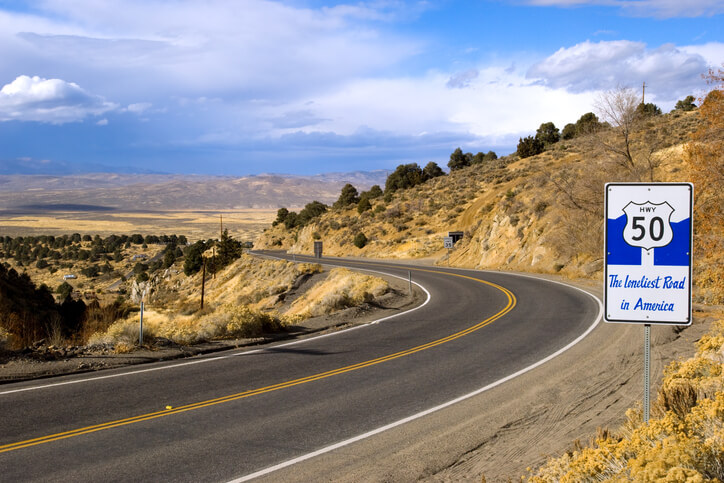Arizona, the home of breathtaking desert landscapes and the Grand Canyon, welcomes countless residents and visitors each year. While taking in the breathtaking scenery, it is crucial for drivers to have a thorough understanding of the state’s driving laws and regulations. This blog post will provide you with a comprehensive overview of the driving laws in Arizona, unique traffic rules, and essential tips for navigating the state’s roads.
Arizona Driving Laws at a Glance:
• Understand Arizona’s key driving laws, including seat belt requirements and speed limits.
• Be aware of unique traffic laws such as the Stupid Motorist Law, Move Over Law, and HOV lane regulations.
• Know DUI law penalties for impaired driving, local ordinances & city-specific smoking bans in cars with children present.
Understanding Arizona's Key Driving Laws
Arizona traffic laws cover a wide range of topics, from the mandatory use of seat belts to speed limits and cell phone restrictions. Being aware of these driving laws can help you avoid traffic offenses, fines, and even accidents on Arizona roads.
The upcoming sections will explore the state’s fundamental driving laws to equip you with everything you need to know to stay safe and on the right side of the law.
Seat Belt Requirements
In Arizona, seat belts play a pivotal role in ensuring safety. According to state driving law, drivers and passengers are required to be secured with seat belts at all times. Children 8 years old and younger must secure themselves with safety restraints appropriate to their size.
Ignoring seat belt laws can result in penalties. For instance, the fine for not wearing a seat belt in Arizona is typically $10 per violation. However, there are some exceptions to the seat belt law, such as individuals with a medical certificate from a licensed healthcare professional indicating that wearing a seat belt is medically contraindicated.
Speed Limits
Speed limits in Arizona vary depending on the type of road you are driving on. The standard speed limits are 55 or 65 mph when roads traverse through major cities and 75 mph between major cities. In some areas, the maximum speed limit can reach up to 85 MPH.
Safety Corridors in Arizona are segments of urban and rural highways where serious traffic accidents are likely to occur. The Arizona Department of Transportation has designated these as zero-tolerance zones, so any driving infraction will be enforced. You can also expect to see more law enforcement within these zones.
Cell Phone Restrictions
The State of Arizona and the Arizona Department of Transportation take cell phone use while driving very seriously. The state enforces a hands-free policy for cell phone use while driving, meaning it is unlawful to use a handheld device, such as a stand-alone electronic device while operating a vehicle. This policy aims to reduce distracted driving and improve road safety.
Violating Arizona’s hands-free policy can bring serious consequences; a civil penalty could be followed by criminal punishment, such as up to months in jail and several thousand dollars in fines if an accident causes a severe injury or death. To prioritize safety, use hands-free devices or find a safe spot to pull over for making calls or sending texts.
Navigating Unique Arizona Traffic Laws
Apart from the standard driving laws, Arizona also has some unique traffic laws that may differ from those in other states. These include the Stupid Motorist Law, the Move Over Law, and regulations regarding High Occupancy Vehicle (HOV) lanes.
By understanding Arizona driving laws, you equip yourself to traverse Arizona roads safely and lawfully.
The Stupid Motorist Law
Arizona’s Stupid Motorist Law, officially known as Arizona Revised Statute 28-910, holds drivers liable for expenses incurred during emergency rescue operations in flood areas. If a driver disregards barricades and becomes stranded on a flooded roadway, they can be held accountable for the cost of their rescue.
Penalties for violating the Stupid Motorist Law in Arizona can be severe, with a charge of up to $2,000 per incident for the cost of emergency response services. So, always pay attention to flood warning signs and refrain from driving through flooded zones. You don’t want to end up stranded in a flood zone and having to fit the bill for your rescue.
The Move Over Law
Drivers in Arizona must abide by the Move Over Law. This instructs them to switch lanes, preferably to the left lane, when they come close to an emergency vehicle with its lights flashing or when getting near a stopped emergency vehicle or approaching personnel. This law is important in allowing those working on the side of the road, including emergency personnel and vehicles with flashing lights, to operate safely.
Failing to comply with the Move Over Law in Arizona may result in a maximum fine of $250. Maintaining alertness and readiness to change lanes or decelerate when nearing emergency vehicles helps protect roadside workers and ward off penalties.
High Occupancy Vehicle (HOV) Lanes
High Occupancy Vehicle (HOV) lanes in Arizona are designated for vehicles with two or more passengers during specific hours to reduce congestion. These lanes help promote:
- Carpooling
- Reduce the number of single-occupant vehicles on the road
- Improve traffic flow
- Reduce emissions
Observing HOV lane regulations is vital since violations can lead to penalties starting from $400. Motorcycles, hybrid or electric vehicles with an AFV license plate, and vehicles carrying two or more passengers can use HOV lanes in Arizona.
Dealing with Emergencies and Accidents on Arizona Roads
Accidents and emergencies can happen to anyone, even the most cautious drivers. Being prepared and knowing how to handle such situations is essential for your safety and the well-being of others on the road. This section will guide you on managing emergencies and accidents on Arizona roads, encompassing car accident procedures, the Good Samaritan Law for hot cars, and contacting emergency services when needed.
Car Accident Procedures
Following specific procedures is essential after a car accident in Arizona to safeguard your health and legal privileges. Here are the steps you should take:
1. Bring your vehicle to a stop and evaluate your situation
2. Capture images of the scene and vehicles involved.
3. Contact the police and provide them with all necessary information.
4. Exchange information with the other driver(s) involved in the accident.
5. Record the damage to your vehicle and any other vehicles involved in the accident.
It is advisable to contact the police after a minor car accident in Arizona. They will file an accident report that could be important in your claim. Be sure to gather as much evidence as possible after a car accident, such as photographs of the scene, contact information of witnesses, and the other driver’s insurance data.
Good Samaritan Law for Hot Cars
Arizona’s Good Samaritan law allows individuals to break a car window to rescue a child or animal trapped inside a hot vehicle without facing civil liability. This law helps protect the lives of children and pets who are at risk of heatstroke and death in hot cars, which can become more than 40 degrees hotter than the outdoor temperature after an hour.
Certain circumstances are required before a situation warrants using the Good Samaritan to force entry into a vehicle. Before breaking a window to rescue a child or pet from a hot car, you should determine if the child or pet seems distressed, verify that the car is locked, and notify the
authorities.
DUI Laws and Penalties in Arizona
Driving under the influence of alcohol or drugs is a serious offense in Arizona. The state enforces strict DUI laws and penalties to discourage impaired driving and protect public safety. The upcoming sections will outline the Blood Alcohol Content (BAC) limits and penalties for DUI offenses in the state.
Blood Alcohol Content (BAC) Limits
In Arizona, the following Blood Alcohol Content (BAC) limits apply:
• For non-commercial drivers, a BAC of 0.08 or higher is considered driving under the influence.
• For commercial drivers, the BAC limit is 0.04%, which is half the legal limit for non-commercial drivers.
• For underage drivers, the BAC limit is 0.00%.
It is important to note that any amount of alcohol can lead to an arrest if it impairs your ability to operate your vehicle safely.
Arizona law enforcement measures BAC via blood and breath tests. Operating a motor vehicle with a BAC higher than 0.08 in Arizona can incur serious repercussions, including a minimum of 30 consecutive days in jail and a fine of up to $2,500.
DUI Penalties
Arizona enforces strict penalties for driving under the influence. For a first-time DUI offense, the penalties consist of:
• Up to 10 consecutive days in jail
• A fine of up to $2,500
• Obligatory community service
• A mandatory driving course
• Alcohol screening
Penalties for DUI offenses escalate with subsequent violations. For a second and subsequent offenses, the penalties become more severe, and extreme DUI charges (defined as a BAC of 0.15% or more) can lead to even harsher penalties.
Prioritizing safety implies evading impaired driving and arranging for a designated driver or other means of transport when under the influence of alcohol or drugs.
Local Ordinances and City-Specific Laws
In addition to statewide driving laws, local ordinances, and city-specific laws may also apply to drivers in Arizona. These regulations vary by city and may include smoking bans in cars with children, local cell phone regulations, and other traffic-related rules.
If you plan on traveling around the great State of Arizona, recognizing local laws and regulations can help you evade penalties and secure a safe driving journey.
Smoking Bans in Cars with Children
While there is no statewide law banning smoking in cars with children in Arizona, some cities, such as Tempe and Kingman, have implemented a smoking ban in vehicles when a child is present. Drivers may be subject to a fine of $50 for a first offense and $100 for subsequent violations. The ban applies to all types of smokers, including those who utilize e-cigarettes.
Private residences are exempt from the smoking ban in cars with children in Arizona, except when the residence is being used as a licensed childcare or adult day care facility. When in doubt, it’s best to follow these regulations and refrain from smoking in vehicles with minors.
Local Cell Phone Regulations
Local cell phone regulations may vary by city in Arizona, but the statewide hands-free policy applies to all drivers. In Phoenix, it is unlawful to converse or compose a text message on cell phones while driving unless the device is set in hands-free mode. Other cities, such as Tucson, Sedona, and Oro Valley, also have their restrictions.
Violating local cell phone regulations while driving in various Arizona cities may result in fines ranging from $75 to $250 for first and subsequent violations. To prioritize safety, use hands-free devices or find a safe spot to pull over for making calls or sending texts.
Obtaining an Arizona Driver's License
Residency Criteria
Arizona requires residents to obtain a state driver’s license and register their vehicle based on various residency criteria. In order to obtain a driver’s license in Arizona, you must establish residency in the state by:
• paying resident tuition
• having a job in the state
• having children enrolled in school
• having a business
• spending seven months or more in the state without paying nonresident tuition.
To demonstrate residency for an Arizona driver’s license, you must present one of the following documents:
• Proof of Identity (such as a birth certificate, U.S. passport, or passport card)
• Proof of Social Security Number
• Proof of Residency (such as a lease agreement, mortgage statement, or current bank statements)
Testing Requirements
Arizona driver’s license applicants must pass written, vision, and road tests to obtain a license. The written test is based on the 2023 Arizona Driver License Manual and consists of multiple-choice questions, available in a computerized format or a foreign language if necessary. To pass the vision test, you must demonstrate that your vision is at least 20/40 in one eye.
During the road test, skills assessed include:
• Adhering to traffic regulations
• Maneuvering the vehicle securely
• Regulating the vehicle
• Bringing the vehicle to a halt in a controlled manner
To secure an Arizona driver’s license, one must attain a score of 80 percent or higher on the requisite tests.
In Conclusion
In conclusion, understanding and adhering to Arizona driving laws and regulations is essential for ensuring a safe and enjoyable driving experience. From standard traffic laws to unique state-specific regulations, knowing the ins and outs of driving in Arizona will help you navigate the roads with confidence and ease. Always prioritize safety, respect fellow drivers, and stay informed about the latest rules and regulations to make the most of your time on Arizona roads.
Frequently Asked Questions
What do I need to know about driving in Arizona?
When driving in Arizona, remember to follow safe driving practices such as driving during daylight hours, being aware of wildlife, watching out for other vehicles, and using caution when passing. Most importantly, remember to take a moment to enjoy the scenery!
What traffic laws are unique to Arizona?
Arizona has a unique Move Over Law, which requires all motorists to move into another lane to provide a clear path for an approaching emergency vehicle with its lights activated. Drivers must also stop (if necessary) until the emergency vehicle passes.
What are the rules for a 16-year-old driver in Arizona?
As a 16-year-old driver in Arizona, you must follow state laws that require you to observe curfew hours, limit passengers, and only drive with an adult. Failure to abide by these laws can result in fines or even revocation of your license. Stay safe and drive responsibly!
Are there any exemptions to the seat belt law in Arizona?
In Arizona, there are exceptions to the seat belt law for individuals who have a valid medical certificate, indicating that wearing a seat belt is not advisable.
What are the penalties for violating the Stupid Motorist Law in Arizona?
Violating the Stupid Motorist Law in Arizona can result in a fine of up to $2,000 per incident.








